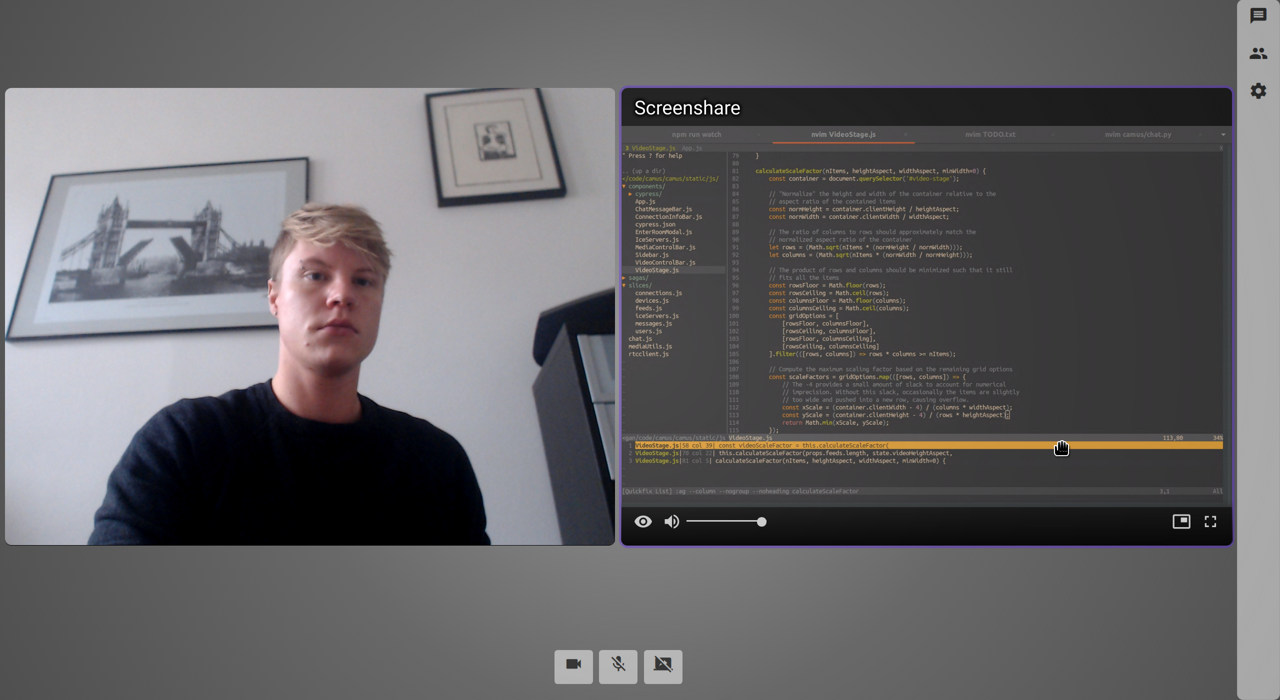Camus is a group video chat app that usesWebRTCfor direct peer-to-peer communication. Users can create and join rooms, stream audio and video with a microphone and webcam, share their screen, and send text messages. You can try a demo athttps://camus.chat,or run your own server using Snap,pip,Docker,orHeroku.
- Create public or private rooms, optionally with a password and guest limit
- Stream audio & video
- Share your desktop
- Send text messages
- Control video feeds -- set your camera resolution, toggle fullscreen or picture-in-picture, disable incoming video
- Configure custom STUN and TURN servers
- Responsive user interface that works on large or small screens
Make sure you havesnapdinstalled. InstallCamus:
$ sudo snap install camus
Once installed, Camus runs automatically as a Snap service. See the Snap service managementdocumentation for details on starting and stopping services.
Go tolocalhost:5000in your browser. For local testing, you can visit the
same room in multiple tabs and each tab will act as a separate client.
Camus requiresPython 3.7or higher since it makes use ofQuartand async syntax. As usual, it's best to use avirtual environment.
Install Camus:
$ pip install camus-chat
Run Camus:
$ camus
Go tolocalhost:5000in your browser. For local testing, you can visit the
same room in multiple tabs and each tab will act as a separate client.
You can find apre-built Docker imageon Docker Hub. Use the following command to pull the image and run a container:
$ docker pull camuschat/camus $ docker run -d -p 5000:5000 camuschat/camus
Go tolocalhost:5000in your browser. For local testing, you can visit the
same room in multiple tabs and each tab will act as a separate client.
Simply click the button above or see thedeployment documentationfor detailed instructions.
See the official documentation athttps://docs.camus.chatfor more information about configuring and running Camus.
If you want to make a contribution, please read theContributingguidelines first.




